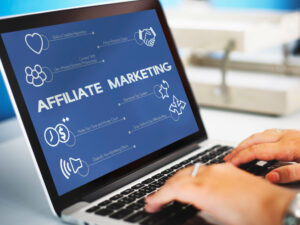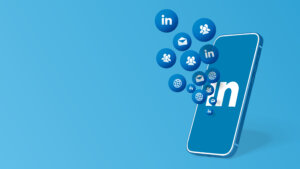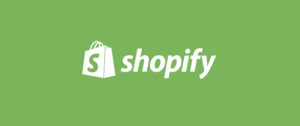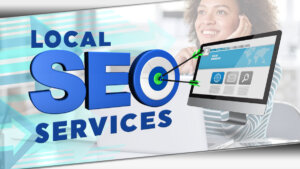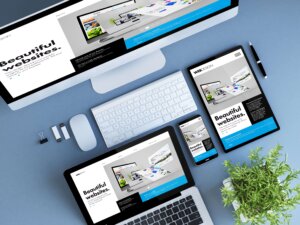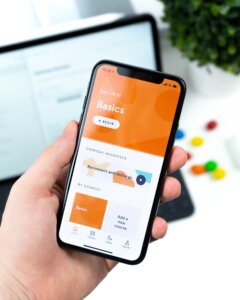Facebook, the social media behemoth, has become an essential marketing tool for businesses of all sizes. With billions of active users worldwide, Facebook provides a vast audience for your business.
However, tapping into this pool of potential customers requires a comprehensive understanding of Facebook advertising. This article will serve as a beginner’s guide on advertising your business on Facebook, providing an in-depth exploration of running a successful Facebook ad campaign.
How Does the Facebook Ad Auction Work?
The Facebook ad auction is the process through which advertisers bid for ad placements. Here’s how it works:
1. Advertiser Bids:
Advertisers set a bid amount, representing the maximum they are willing to pay for their ad to be shown to their target audience.
2. Ad Relevance and Quality:
Facebook evaluates the relevance and quality of each ad based on factors such as engagement, feedback, and ad content.
3. Estimated Action Rates:
Based on past behavior and engagement, Facebook predicts how likely users are to take the desired action (e.g., click, like, or purchase).
4. Ad Auction:
Facebook combines the bid, ad relevance, and estimated action rates to determine the ad’s total value.
The ad with the highest total value wins the auction and gets shown to the target audience.
5. Ad Placement:
Winning ads are placed in users’ feeds, stories, or other placements based on the ad format and targeting options the advertiser selects.
Why Should You Advertise on Facebook?
Extensive reach: With nearly 3 billion active users monthly, Facebook provides access to a vast audience.
Robust targeting options:
Target ads based on user demographics, behaviors, and interests.
Multiple ad formats: Choose from images, video, carousel, and other formats to suit your marketing objectives.
Cost-effectiveness:
Control ad spend by setting daily or lifetime budgets.
Insightful analytics:
Track ad performance in real-time and make adjustments for improved results.
Setting Up Your Facebook Business Page
- Go to Facebook Pages and select a category that best describes your business.
- Enter your business details, add visuals, and claim your unique URL.
- Fill out your Page info with as much information as possible, including your address, business hours, and other relevant details.
- By understanding the Facebook ad auction process and setting up a Facebook Business Page, you can effectively advertise your business on Facebook and tap into its vast audience.
Understanding Facebook Ad Campaign Structure
Understanding the structure of a Facebook ad campaign is crucial before diving into ad creation. A Facebook ad campaign comprises three key levels, each serving a specific purpose:
1. Campaign Level:
Objective Setting: This is the foundational level where you define your campaign’s primary goal, such as increasing brand awareness, driving traffic to your website, or generating leads.
High-Level Strategy: At this level, you establish the overarching strategy for your campaign, which will guide your ad sets and individual ads.
2. Ad Set Level:
Target Audience Definition: Here, you specify the audience you want to target with your ads based on demographics, interests, behaviors, and other criteria.
Budget and Schedule: You set your budget for each ad set and determine the schedule for when your ads will run.
Ad Placement: You choose where your ads will be shown, such as in users’ News Feeds, on Instagram, or in the Audience Network.
3. Ad Level:
Ad Creative Development: This is where you create the actual content for your ads, including images, videos, headlines, text, and calls-to-action (CTAs).
Ad Format Selection: You choose the format of your ads, such as single image, carousel, slideshow, or video, based on your campaign objectives and target audience.
Message Tailoring: Here, you tailor your ad messaging to resonate with your target audience and encourage them to take the desired action.
Creating Your Facebook Ad Campaign:
- Access Ads Manager: Go to Ads Manager on Facebook or use the direct link.
- Choose Objective: Select the objective that aligns with your campaign goals.
- Name Your Campaign: Use a descriptive name for easy tracking and organization.
- Set Budget and Schedule: Determine your budget and schedule for the campaign.
- Define Target Audience: Specify the audience you want to target with your ads.
- Design Ad Creative: Create engaging ad content that aligns with your campaign objective.
- Review and Publish: Review your ad to ensure everything is correct before publishing it.
By understanding and effectively utilizing the structure of a Facebook ad campaign, you can create targeted, engaging ads that resonate with your audience and drive results for your business.
Mastering Facebook Ads: Your Complete Roadmap
Embarking on a Facebook advertising journey can propel your business to new heights, but it requires careful planning and execution. Here’s a comprehensive guide to help you navigate the intricacies of running successful Facebook ad campaigns:
Define Your Objectives:
Start by clarifying your goals. Whether it’s increasing brand awareness, driving website traffic, boosting sales, or generating leads, having clear objectives will shape your entire campaign strategy.
Know Your Audience:
Utilize Facebook’s robust targeting options to pinpoint your ideal audience based on demographics, interests, behaviors, and more. Understanding your audience ensures that your ads reach the right people.
Select the Right Ad Format:
Facebook offers a diverse range of ad formats, including image ads, video ads, carousel ads, and more. Choose the format that best aligns with your campaign goals and resonates with your audience.
Craft Compelling Ad Creative:
Capture your audience’s attention with captivating ad creative. From attention-grabbing headlines to persuasive ad copy and stunning visuals, compelling creativity is critical to driving engagement.
Set Your Budget and Schedule:
Determine how much you will spend on your ads and set a budget that reflects your objectives. Whether a daily or lifetime budget, ensure it’s optimized for maximum impact. Additionally, schedule your ads to run when your audience is most active.
Choose Strategic Ad Placements:
Consider where your audience spends the most time on Facebook—whether it’s in the News Feed, Instagram feed, Stories, or other placements. Tailor your ad placements to reach your audience where they’re most likely to engage.
Monitor, Analyze, and Optimize:
Keep a close eye on your ad performance using Facebook Ads Manager. Analyze key metrics such as CTR, CPC, and ROAS to gauge effectiveness. Use this data to iterate and optimize your campaigns for better results.
Experiment with Testing:
Embrace A/B testing to explore different ad creatives, audiences, and placements. Testing allows you to identify what resonates best with your audience and refine your strategy.
Track Conversions and ROI:
Implement conversion tracking to measure the impact of your ads on desired actions, such as purchases, sign-ups, or app downloads. Understanding your ROI is essential for assessing campaign effectiveness and allocating resources wisely.
Adhere to Advertising Policies:
Ensure compliance with Facebook’s advertising policies to avoid ad rejections or account suspensions. Familiarize yourself with the guidelines and best practices to maintain a positive advertising experience.
By following these steps and continually refining your approach, you can harness the full potential of Facebook ads to achieve your business objectives and drive growth.
Why Hire a Facebook Agency?
Hiring a Facebook agency can offer numerous benefits for businesses looking to maximize their Facebook advertising efforts. Here are some compelling reasons to consider working with a Facebook agency:
Expertise and Experience:
Facebook agencies specialize in managing Facebook ad campaigns. They have a team of experts with extensive experience in creating and optimizing campaigns, ensuring that your ads are effective and efficient.
Industry Insights:
Facebook agencies stay up-to-date with the latest trends and changes in the platform. They can provide valuable insights and recommendations to help you make informed decisions about your advertising strategy.
Time and Resource Savings:
Managing Facebook ads can be time-consuming and requires specific skills. By outsourcing this task to a Facebook agency, you can save time and resources that can be allocated to other aspects of your business.
Cost-Effectiveness:
While hiring a Facebook agency involves a cost, their expertise can help you achieve better results with your ad spend. They can optimize your campaigns to ensure that you get the most out of your budget.
Creative Solutions:
Facebook agencies can offer creative solutions to help your ads stand out and engage your target audience. They can help you create compelling ad copy, design eye-catching visuals, and develop effective ad strategies.
Performance Tracking and Reporting:
Facebook agencies provide detailed performance tracking and reporting. They can analyze your ad performance and provide insights on how to improve your campaigns for better results.
Scalability:
As your business grows, a Facebook agency can help you scale your ad campaigns. They can adjust your strategy to accommodate changes in your business goals and target audience.
Overall, hiring a Facebook agency can be a valuable investment for businesses looking to maximize their Facebook advertising efforts. Their expertise, experience, and resources can help you achieve better results with your ad campaigns and drive growth for your business.
How to use Meta Pixel?
To use the Meta Pixel (formerly known as the Facebook Pixel), you’ll need to set it up on your website and then use it to track conversions, optimize ad delivery, and create custom audiences for your Facebook ads. Here’s how to use the Meta Pixel:
1. Set Up the Meta Pixel
- Go to your Facebook Events Manager.
- Click on “Connect Data Sources” and select “Web.”
- Choose “Facebook Pixel” and click “Connect.”
- Follow the instructions to add the Meta Pixel code to your website’s header.
2. Install the Meta Pixel Helper (Optional)
- Install the Meta Pixel Helper browser extension to verify that your Meta Pixel is installed correctly and working.
3. Set Up Standard Events (Optional)
- Set up standard events to track specific actions on your website, such as purchases, sign-ups, or page views.
4. Use the Meta Pixel for Conversion Tracking
- Use the Meta Pixel to track conversions from your Facebook ads. When someone clicks on your ad and takes a specific action on your website, such as making a purchase, the Meta Pixel will track this conversion.
5. Create Custom Audiences
- Use the Meta Pixel to create custom audiences based on the actions people take on your website. For example, you can create an audience of people who have visited a specific page on your website or added items to their cart but still need to complete a purchase.
6. Optimize Ad Delivery
- Use the Meta Pixel to optimize your ad delivery based on the actions people take on your website. For example, you can optimize your ads to show to people who are more likely to make a purchase based on their past behavior.
7. Monitor Performance
- Use Facebook Ads Manager to monitor the performance of your Meta Pixel and track key metrics such as conversions, click-through rates, and return on ad spend.
Using the Meta Pixel, you can better track the effectiveness of your Facebook ads, optimize ad delivery, and create targeted audiences for your campaigns.
How to open your Facebook Ad Account?
To open a Facebook ad account, you need to have a Facebook account and follow these steps:
1. Log in to Your Facebook Account
- Go to Facebook and log in to your account. If you don’t have a Facebook account, you must create one.
2. Go to Facebook Ads Manager
- Once logged in, go to the Facebook Ads Manager by clicking on the drop-down arrow in the top-right corner of the Facebook interface and selecting “Create Ads” or by visiting Facebook Ads Manager.
3. Set Up Your Ad Account
- You’ll be prompted to do so if you have not set up an ad account. Click “Create Ad Account” and follow the instructions to set up your ad account. You must provide basic information, including your country, currency, and time zone.
4. Add a Payment Method
- After setting up your ad account, you must add a payment method to pay for your ads. Click on “Billing” in the Ads Manager and then “Payment Settings” to add a payment method, such as a credit card or PayPal account.
5. Create Your First Ad Campaign
- Once your ad account is set up and you’ve added a payment method, you can create your first ad campaign. Click “Create” in the Ads Manager and follow the prompts to create your ad campaign, including selecting your campaign objective, defining your audience, setting your budget, and making your ad creative.
6. Review and Launch Your Ad
- After creating your ad, review it to ensure everything looks correct. Once satisfied, click “Publish” to launch your ad campaign.
7. Monitor Your Ad Performance
- Keep an eye on your ad performance in the Ads Manager. Monitor key metrics such as reach, engagement, and conversions to see how your ads are performing and make adjustments as needed.
Following these steps, you can open a Facebook ad account and start running ads to promote your business or products.
Navigating Facebook Ad Performance
Once your Facebook ad goes live, keeping a vigilant eye on its performance is paramount for optimizing results. In Facebook Ads Manager, real-time insights empower you to track metrics like reach, impressions, clicks, and conversions.
Unveiling Facebook Slideshow Ads
Facebook Slideshow Ads offer a dynamic avenue for advertisers to craft video-like experiences using a sequence of images, text, and music. These ads are lightweight, cost-effective, and resonate well with audiences across various devices.
Crafting Your Slideshow:
- Creation Phase: Utilize Facebook’s ad creation tools to compile your slideshow. Choose from existing images or tap into Facebook’s extensive stock image library for captivating visuals.
- Customization Touch: Elevate your slideshow’s appeal by adding text overlays, music, and seamless transitions. Tailor the aspect ratio and duration to ensure optimal engagement.
- Targeting and Budgeting: Define your target audience based on relevant demographics, interests, and behaviors. Establish a budget and bidding strategy aligned with your campaign objectives.
- Performance Monitoring: Post-launch, monitor your ad’s performance through Facebook Ads Manager. Keep tabs on key metrics like engagement rates and conversions to gauge effectiveness.
Advantages of Slideshow Ads:
- Cost-Effectiveness: Slideshow Ads offer a budget-friendly alternative to video ads, making them accessible to advertisers with diverse financial resources.
- Engagement Magnet: Visually compelling and dynamic, Slideshow Ads captivate audiences, especially on mobile devices, fostering deeper engagement.
- Ease of Creation: No video editing prowess required! With intuitive ad creation tools, crafting a compelling Slideshow Ad is a breeze, even for novices.
- Swift Loading: Slideshow Ads boast rapid loading times, ensuring seamless delivery of your message even in regions with limited internet connectivity.
Optimal Facebook Page Management
Mastering your Facebook Page entails adhering to these best practices:
- Holistic Information: Populate your Page with comprehensive details including business name, address, phone number, website, and a succinct overview.
- Visual Excellence: Enthrall visitors with high-quality profile and cover photos that authentically represent your brand’s essence.
- Compelling About Section: Craft a captivating About section that succinctly communicates your brand’s story, products, and services.
- Consistent Posting: Maintain an active presence by sharing diverse content types regularly, fostering ongoing engagement.
- Active Engagement: Cultivate a culture of responsiveness by promptly addressing comments, messages, and reviews, nurturing valuable relationships.
- Strategic Hashtag Usage: Enhance discoverability by incorporating relevant hashtags into your posts, widening your audience reach.
- Strategic Promotion: Leverage Facebook ads to amplify your Page’s reach, employing precise targeting to connect with your ideal customer base.
- Analytics Utilization: Harness the power of Facebook Insights to glean actionable insights into your Page’s performance, refining your content strategy accordingly.
- Collaboration Opportunities: Forge mutually beneficial partnerships with complementary Pages, leveraging cross-promotion to extend your reach.
- CTA Integration: Harness the potential of call-to-action buttons to guide visitors towards desired actions, be it scheduling appointments or making purchases.
By adhering to these guidelines, you can curate an engaging and impactful Facebook Page that serves as a cornerstone for your brand’s online presence and success.
What are different Facebook ad formats?
Several different ad formats are available on Facebook, each designed to suit other marketing objectives and audience preferences. Here are some of the most common Facebook ad formats:
1. Image Ads
- Simple ads that feature a single image. They are easy to create and can effectively drive traffic or engagement.
2. Video Ads
- Ads that feature a video. Video ads can be highly engaging and help tell a story or showcase a product or service.
3. Carousel Ads
- Ads that allow you to showcase multiple images or videos within a single ad unit. Users can swipe or scroll through the carousel to view all the content.
4. Slideshow Ads
- Ads that create a video-like experience using a series of images, text, and music. Slideshow ads are lightweight and load quickly, making them ideal for mobile users.
5. Collection Ads
- Ads that feature a collection of products or items from your catalog. Users can browse the collection within the ad and click through to purchase or learn more.
6. Instant Experience Ads (formerly Canvas Ads)
- Ads that create an immersive, full-screen experience for users. Instant Experience ads can include images, videos, carousels, and more and are designed to capture the attention of mobile users.
7. Lead Ads
- Ads that are designed to generate leads for your business. Lead ads include a contact form that users can fill out without leaving Facebook.
8. Offer Ads
- Ads that promote a special offer or discount from your business. Users can claim the offer directly from the ad and redeem it in-store or online.
9. Poll Ads
- Ads that include a poll or survey for users to engage with. Poll ads can be a fun way to interact with your audience and gather feedback.
10. Playable Ads
- Ads that allow users to interact with a game or app before downloading it. Playable ads can be a highly engaging to promote mobile games or apps.
By using the suitable ad format for your campaign objectives and audience, you can create more engaging and compelling ads that drive results for your business.
Deciphering Your Facebook Ads Costs and Ad Budget
Navigating the world of Facebook ads costs and budgets requires a strategic approach. Here’s a comprehensive guide to help you figure out these crucial aspects:
Define Your Campaign Objectives:
Identify your advertising goals, such as increasing brand awareness, driving website traffic, generating leads, or boosting sales.
Target Audience Specification:
Define your target audience based on demographics, interests, behaviors, and other criteria. A more refined audience can lead to lower costs and better outcomes.
Ad Format Selection:
Choose the ad format that aligns best with your goals, whether it’s image ads, video ads, carousel ads, or slideshow ads.
Budget and Bidding Strategy Setting:
Decide on your ad budget and set a daily or lifetime limit. Choose a bidding strategy that matches your objectives, such as cost per click (CPC) or cost per thousand impressions (CPM).
Ad Performance Monitoring:
Use Facebook Ads Manager to track your ad’s performance. Monitor key metrics like reach, engagement, and conversions to gauge effectiveness.
Budget and Strategy Adjustment:
Based on performance data, adjust your budget and bidding strategy to optimize your campaigns for better results.
Factors Influencing Facebook Ad Costs:
Target Audience Size and Competition:
The size and competitiveness of your target audience can impact ad costs.
Ad Relevance:
More relevant ads are often cheaper to run, so ensure your ads resonate with your audience.
Ad Placement:
The placement of your ads (e.g., News Feed, Instagram, Audience Network) can affect costs.
Seasonality: Ad costs may vary based on seasonal trends and demand for advertising.
Tips for Managing Ad Costs and Budget:
Start Small, Scale Gradually:
Begin with a modest budget and increase it as you observe results.
Precise Targeting:
Utilize Facebook’s targeting options to reach a more specific audience, potentially lowering costs.
Creative Testing:
Experiment with different ad formats and creatives to discover what resonates best with your audience.
Regular Monitoring and Optimization:
Continuously monitor ad performance and make adjustments to optimize your campaigns.
By implementing these strategies and tips, you can effectively manage your Facebook ads costs and budget, ensuring your campaigns are efficient and yield the desired results.
Navigating Facebook Ad Costs: What to Expect
The realm of Facebook ad costs is multifaceted, influenced by a myriad of factors. Here’s a comprehensive overview to help you understand and navigate these costs effectively:
Average Cost Range:
The cost of Facebook ads typically falls between $0.50 to $2.00 per click (CPC), although this can vary significantly based on various factors.
Steps to Determine Your Facebook Ads Costs and Budget:
Define Your Advertising Goals: Clarify your objectives, whether it’s increasing brand awareness, driving website traffic, generating leads, or boosting sales.
Identify Your Target Audience: Leverage Facebook’s targeting options to define your audience based on demographics, interests, behaviors, and more.
Choose Your Ad Format: Select the ad format that aligns best with your goals, such as image ads, video ads, carousel ads, or slideshow ads.
Set Your Budget and Bidding Strategy: Determine your ad spend and set a daily or lifetime budget. Choose a bidding strategy like CPC or CPM that suits your objectives.
Monitor Ad Performance: Keep a close eye on your ad’s performance using Facebook Ads Manager. Analyze metrics like CTR, CPC, and ROAS to gauge effectiveness.
Adjust Your Strategy: Based on performance data, tweak your targeting, ad creative, and budget to optimize campaigns and maximize ROI.
Factors Influencing Facebook Ad Costs:
Target Audience: The size and competitiveness of your target audience can impact ad costs.
Ad Objective: Different objectives may have varying costs, with conversion-focused ads typically more expensive than awareness-focused ones.
Ad Placement: Costs can differ based on placement, with News Feed ads generally costing more than others.
Seasonality and Trends: Ad costs may fluctuate based on seasonal trends and industry dynamics.
Ad Quality and Relevance: High-quality, relevant ads are often rewarded with lower costs and better placement.
By diligently monitoring ad performance and adapting your strategy accordingly, you can optimize Facebook ad costs and budgets to achieve your advertising goals effectively.
How to Run an Optimized Facebook Advertising Campaign:
- Set Clear Goals: Define your campaign objectives and key performance indicators (KPIs).
- Define Your Target Audience: Use Facebook’s targeting options to reach the right audience.
- Create Compelling Ad Creative: Develop engaging ad creative that resonates with your audience.
- Optimize Ad Delivery: Use Facebook’s optimization options to ensure your ads are delivered to the right people at the right time.
- Monitor and Adjust: Regularly monitor your campaign performance and adjust based on the data.
Achieving Campaign Budget Optimization:
- Set a Total Campaign Budget: Determine the amount you’re willing to spend on your campaign.
- Allocate Budget Across Ad Sets: Use Facebook’s Campaign Budget Optimization (CBO) to distribute your budget automatically to the ad sets that are performing best.
What are Facebook Messenger Ads?
- Messenger ads allow you to reach people on Facebook Messenger with targeted ads. They can appear in the Messenger inbox or as sponsored messages.
Understanding Facebook Stories:
- Facebook Stories are short, brief photos or videos that appear at the top of the Facebook app. They provide a way to share content that disappears after 24 hours.
Meta Business Suite and Special Ad Categories:
- Meta Business Suite is a tool that allows businesses to manage their presence on Facebook, Instagram, and Messenger.
- Special Ad Categories are specific ads related to housing, employment, and credit opportunities, which have additional restrictions and requirements.
How to Work Out Your Campaign Spending Limit:
- Determine your overall marketing budget and allocate a portion of it to your Facebook advertising campaign. Consider factors such as your goals, target audience, and competition.
Facebook Ads versus Google Ads:
- Facebook Ads focus more on targeting specific audiences based on interests and demographics, while Google Ads are more intent-based, targeting users based on their search queries.
How Facebook Helps Your Online Marketing Efforts:
- Facebook provides a powerful platform for reaching and engaging with a large audience, allowing businesses to build brand awareness, drive website traffic, generate leads, and increase sales.
Bottom Line
Facebook advertising can be a powerful tool for growing your business, no matter its size or industry. By understanding how to create and optimize Facebook ad campaigns, you can reach a vast audience, engage potential customers, and drive meaningful business results. Remember, successful Facebook advertising requires continuous testing and optimization. So, feel free to experiment with different ad formats, targeting options, and creative elements to discover what works best for your business.
 Sections of this topic
Sections of this topic



